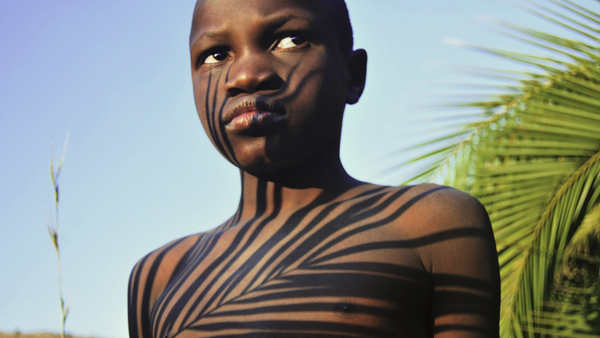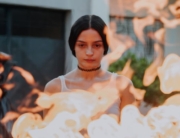What this inspiring blend of documentary and animated fantasy does particularly well is maintain a balance of its two worlds. Half of the film follows a group of orphans in Swaziland, none of whom are older than 11, as they collaborate on creating the tale of Liyana, a young girl who goes on a quest to rescue her brothers from human traffickers. Her adventure is brought to animated life in lush, vibrant color. However, the film never loses sight of the tragic realities that inspired the storytellers, adding an extra layer of poignancy.
Directors Aaron and Amanda Kopp embedded at their subjects’ orphanage, located in the wilderness, and followed the children as they attended classes, played in the forest, ate communal meals together, and more. (The camera occasionally mirrors the kids’ restlessness by zipping around the compound along with them.) However, the sense that they’ve experienced trauma is inescapable and revealed in close-up or slow-motion shots, which study the children’s faces intently.
Enter Gcina Mhlophe, a South African author who invites the orphans to create a narrative as a form of therapy. She offers them a basic outline and guidance, and from the start, the connection between their experiences and the fictional tale is clear. At one of the earliest brainstorming sessions, she asks them to come up with the catalyzing event leading to the brothers of the main character, Liyana, being spirited away. Nearly all the youths suggest a burglary. Shortly afterward, it’s revealed there was a break-in at the orphanage three months earlier.
Under Mhlophe’s guidance, her students fill in details such as who helps Liyana on her mission, where the kidnappers have taken her brothers, and what obstacles she encounters. The ensuing adventure is rousing, but it’s especially exciting to see the youths’ seemingly limitless creativity in action. They make simplistic Magic Marker drawings, construct paper collages, and even build three-dimensional sculptures out of materials in their yard, and many of these ideas find their way into Liyana’s story.
The orphans also put their stamp on the character of Liyana, who seems to represent a certain amount of wish-fulfillment: she has a powerful bull as a loyal sidekick, as well as a full head of hair, the latter of which is a noticeable contrast to the youths, who all have cropped hair, regardless of gender. She also reflects a distinctly childlike point of view, frequently choosing to hide from any potential danger, always seemingly aware on some level of being physically weaker.
The animated segments contain some ugly, violent encounters between Liyana and other creatures and monsters, and these are made even more intense by rapid-fire editing. However, the visuals are clean and appealing. Meanwhile, from a design perspective, Liyana cuts a compelling figure. Proportionally, she resembles a real pre-teen, while her bright yellow dress provides a symbolic contrast to the places of literal and moral darkness she finds herself in. There it makes her stands out as a beacon of hope.
Along with delving into traumas from the orphans’ pasts, the film explores the challenges facing them in the present, which largely relate to AIDS and HIV, the infection rate of which has reached epidemic levels in Swaziland. According to the film, nearly one-quarter of all adults and hundreds of thousands of children have HIV, and so social workers at the orphanage bring any new arrivals to a clinic for blood tests. Dramatically speaking, these scenes could easily overwhelm their animated counterparts, given how they depict real flesh-and-blood kids at risk. For their part, the filmmakers avoid this problem by reserving the moments in which the orphans are at their most vulnerable for when Liyana is in the most danger and then cutting between the two story lines, which blunts the impact of the real-life circumstances.
Yet despite how skillfully the film crafts dramatic arcs for its subjects and their fictional creation, one is set in the real world while the other is not. It’s a dichotomy not lost on the orphans themselves, who point out that reality is much more complicated than writing a story. Ultimately, Liyana falls short of outright stating that since art imitates life, it must work the other way around, too. However, we are left with a very powerful impression of resilience, the power of imagination, and the hope that the kids can craft a similarly happy ending for their own lives.
Liyana screened at the Museum of Modern Art’s Doc Fortnight 2018.

















Leave A Comment